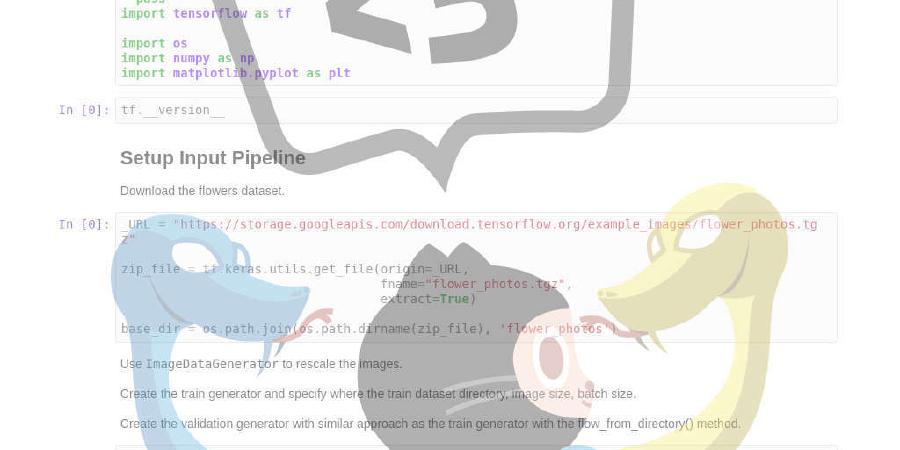ericmjl/bayesian-stats-modelling-tutorial

How to do Bayesian statistical modelling using numpy and PyMC3
| repo name | ericmjl/bayesian-stats-modelling-tutorial |
| repo link | https://github.com/ericmjl/bayesian-stats-modelling-tutorial |
| homepage | |
| language | Jupyter Notebook |
| size (curr.) | 91166 kB |
| stars (curr.) | 423 |
| created | 2018-02-01 |
| license | MIT License |
bayesian-stats-modelling-tutorial
How to do Bayesian statistical modelling using numpy and PyMC3.
for conference tutorial attendees
If you’re looking for the material for a specific conference tutorial, navigate to the notebooks directory and look for a subdirectory for the conference you’re interested. For example, notebooks/ODSC-East-2020-04-14 contains the material for Hugo’s ODSC East tutorial on April 14, 2020.
getting started
To get started, first identify whether you:
- Would like to run the tutorial material on servers hosted elsewhere, to avoid installation,
- Prefer to use the
condapackage manager (which ships with the Anaconda distribution of Python), - Prefer to use
pipenv, which is a package authored by Kenneth Reitz for package management withpipandvirtualenv, or - Only want to view the website version of the notebooks.
To run the tutorial material on servers elsewhere
To do this, click on the Binder badge above. This will spin up the necessary computational environment for you so you can write and execute Python code from the comfort of your browser. It is a free service. Due to this, the resources are not guaranteed, though they usually work well. If you want as close to a guarantee as possible, follow the instructions below to set up your computational environment locally (that is, on your own computer).
1. Clone the repository locally
In your terminal, use git to clone the repository locally.
git clone https://github.com/ericmjl/bayesian-stats-modelling-tutorial
Alternatively, you can download the zip file of the repository at the top of the main page of the repository. If you prefer not to use git or don’t have experience with it, this a good option.
2. Download Anaconda (if you haven’t already)
If you do not already have the Anaconda distribution of Python 3,
go get it
(note: you can also set up your project environment w/out Anaconda using pip to install the required packages;
however Anaconda is great for Data Science and we encourage you to use it).
3. Set up your environment
3a. conda users
If this is the first time you’re setting up your compute environment,
use the conda package manager
to install all the necessary packages
from the provided environment.yml file.
conda env create -f binder/environment.yml
To activate the environment, use the conda activate command.
conda activate bayesian-modelling-tutorial
If you get an error activating the environment, use the older source activate command.
source activate bayesian-modelling-tutorial
To update the environment based on the environment.yml specification file, use the conda update command.
conda env update -f binder/environment.yml
3b. pip users
Please install all of the packages listed in the environment.yml file manually.
An example command would be:
pip install networkx scipy ...
3c. don’t want to mess with dev-ops
If you don’t want to mess around with dev-ops, click the following badge to get a Binder session on which you can compute and write code.
4a. Open your Jupyter notebook
-
You will have to install a new IPython kernelspec if you created a new conda environment with
binder/environment.yml.python -m ipykernel install –user –name bayesian-modelling-tutorial –display-name “Python (bayesian-modelling-tutorial)”
You can change the --display-name to anything you want, though if you leave it out, the kernel’s display name will default to the value passed to the --name flag.
- In the terminal, execute
jupyter notebook.
Navigate to the notebooks directory
and open the notebook 01-Student-Probability_a_simulated_introduction.ipynb.
4b. Open your Jupyter notebook in Jupyter Lab!
In the terminal, execute jupyter lab.
Navigate to the notebooks directory
and open the notebook 01-Student-Probability_a_simulated_introduction.ipynb.
Now, if you’re using Jupyter lab, for Notebook 2, you’ll need to get ipywidgets working. The documentation is here.
In short, you’ll need node installed & you’ll need to run the following in your terminal:
jupyter labextension install @jupyter-widgets/jupyterlab-manager
4c. Open your Jupyter notebook using Binder.
Launch Binder using the button at the top of this README.md. Voila!
4d. Want to view static HTML notebooks
If you’re interested in only viewing the static HTML versions of the notebooks, the links are provided below:
Part 1: Bayesian Data Science by Simulation
Part 2: Bayesian Data Science by Probabilistic Programming
- Two Group Comparisons: Drug effect on IQ
- Multi-Group Comparisons: Multiple ways of sterilizing phones
- Two Group Comparisons: Darwin’s Finches
- Hierarchical Modelling: Baseball
- Hierarchical Modelling: Darwin’s Finches
- Bayesian Curve Regression: Identifying Radioactive Element
Acknowledgements
Development of this type of material is almost always a result of years of discussions between members of a community. We’d like to thank the community and to mention several people who have played pivotal roles in our understanding the the material: Michael Betancourt, Justin Bois, Allen Downey, Chris Fonnesbeck, Jake VanderPlas. Also, Andrew Gelman rocks!
Feedback
Please leave feedback for us here! We’ll use this information to help improve the teaching and delivery of the material.
data credits
Please see individual notebooks for dataset attribution.
Further Reading & Resources
Further reading resources that are not specifically tied to any notebooks.






